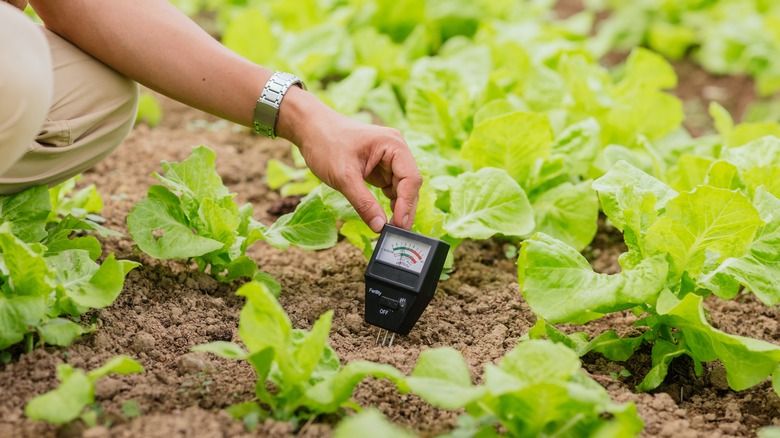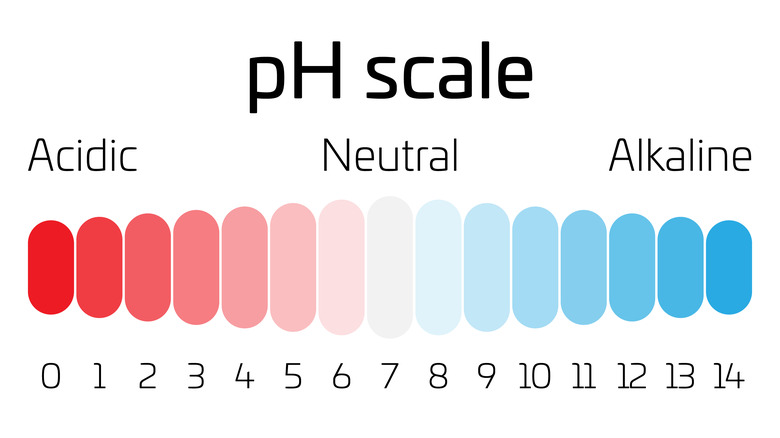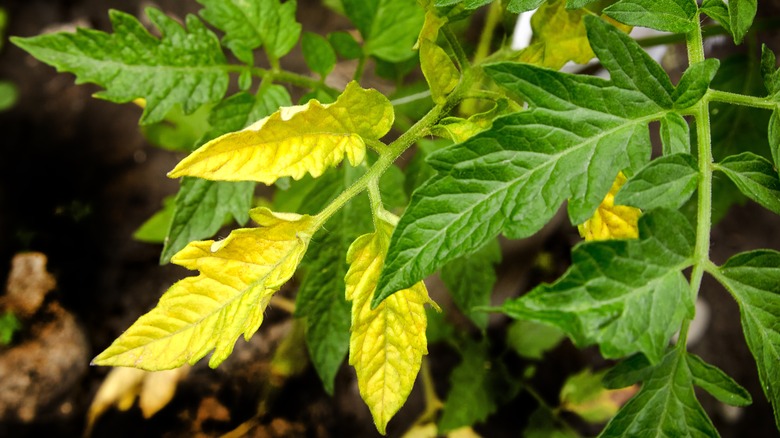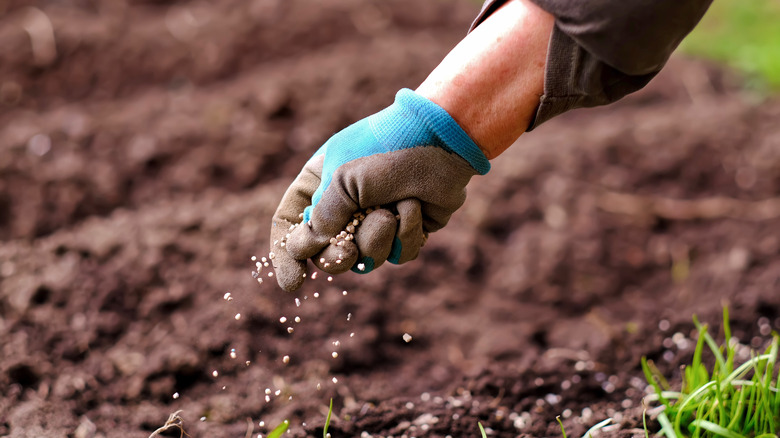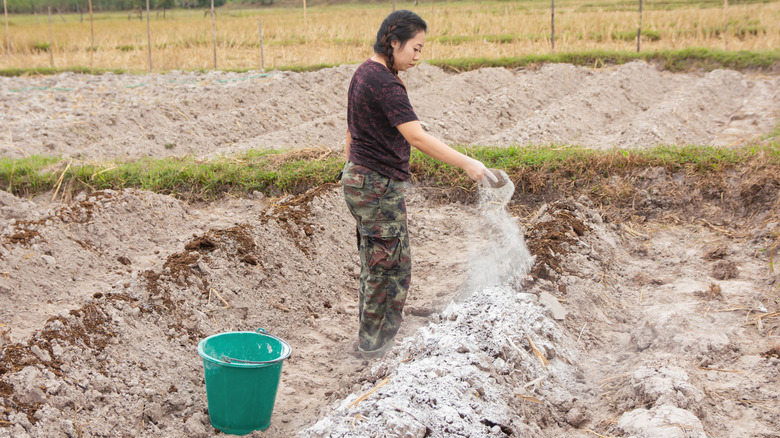Why Soil Acidity Matters And How To Fix Imbalances
If you have tried to grow garden vegetables or landscaping plants but cannot seem to get them to thrive, it may not be because you have a black thumb. Instead, your soil acidity levels may be to blame. Although most plants like a slightly acidic soil environment, different plants have specific preferences.
The first step to finding your soil's acidity level (also called pH level) is to get a soil test. You can find kits at garden centers to check your pH, get a soil test from your local extension service, or do a fun science experiment at home. The DIY home option will not give you an exact level, so if you need the numbers, your best option is to get a free or inexpensive text from the extension service.
However, if you just want to know which way your pH is leaning, collect four tablespoons of soil. Place two tablespoons in a bowl with half a cup of white vinegar. The mixture will start to fizz if you have alkaline soil. If you do not get that result, check for acidic soil by dampening the other two tablespoons with distilled water. Next, blend the moist soil with half a cup of baking soda and see if it fizzes. If you get no reaction from either text, your pH level is neutral. Now that you know what kind of soil you have, let's discuss what that means and why it matters.
What is soil acidity?
We know that soil is either alkaline, neutral, or acidic. Sometimes people refer to acidic soil as "sour" and alkaline soil as "sweet," but pH is typically understood using a numerical value. Perhaps you remember from science class that acidity is measured on a scale of 0 to 14, with 0 being the highest level of acidity and 14 being the most alkaline. Naturally, a pH level of 7 is neutral. We know why acidity matters in everyday life. You hear it repeatedly in toothpaste commercials: "Acidic foods can eat away at your tooth enamel." But in the garden, pH levels affect the ability of plants to grow and thrive.
Some plants, like blueberries and azaleas, prefer a higher soil acidity than average, performing best with a pH of around 5. However, most garden and landscape plants prefer a soil acidity level closer to average, around 6.5. The natural conditions of the soil where you live are the primary factor determining the acidity level you have to work with. Clay soil is usually alkaline, while sandy soils tend to be more acidic.
How pH affects plants
Why do plants need a certain level of soil acidity? It's all about the availability of nutrients. For example, nitrogen is the macronutrient most responsible for helping plants conduct photosynthesis, but it is less available in very acidic conditions. If you are trying to grow tomatoes in clay soil with a pH level of around 5.5, your plants will not grow stems and leaves as healthy as those growing in soil conditions with a pH of 6.5, where nitrogen is more readily available.
If you planted the same kind of tomato plant in soil that is too alkaline, above 7.5, nitrogen would not be significantly affected, but plants need a balance of macro- and micronutrients to thrive. In alkaline soils, iron and magnesium deficiencies can cause problems with foliage and fruit production. Since an imbalance of pH in either direction affects the ability of a plant to absorb nutrients, it is essential to test your soil and learn how to make the necessary adjustments to grow happy, healthy plants.
How to amend alkaline soils
When you have your soil test results, you can start amending your vegetable or flower beds to make them better suited to what you want to grow. If you have discovered you have alkaline soil, there are many options to raise the acidity level. If your gardens only need a slight boost, sulfur acts slowly but offers the best long-term solution. By amending with sulfur yearly, you can reach and keep your desired soil acidity. To determine if you have reached the right balance, test yearly. Once you hit that magic number of about 6.5, you can stop adding this amendment.
If you see signs of iron deficiency, like yellowing leaves, and you know your soil is too alkaline, add iron sulfate to your garden to make it more acidic while giving your plants the immediate boost of iron they need to perk up. For acid lovers like azaleas and blueberries, products like Dr. Earth Acid Lovers Fertilizer are specifically made for these types of plants that will both feed your greenery and amend the soil.
How to amend acidic soils
Although making the soil more acidic can be a bit difficult and take a few years, increasing alkalinity is comparatively easy. If you have a fireplace or wood-burning stove, turn that ash into a soil amendment by working it into your garden with a tiller or shovel. Not only is this an economical way to lower the pH, but it also adds potassium and calcium, as well as other macro- and micronutrients.
Using garden lime is also a convenient and straightforward method to improve your acidic soil. You can find this product at most garden centers for a low price. It's basically just ground limestone that can be added to the surface of your soil and raked into the top few inches. This is an excellent choice for significantly acidic areas. In dense clay conditions, you may need around 100 pounds of garden lime per 1,000 square feet of garden space. That sounds like a lot, but it might be your best option if you want to plant your garden soon and have a fruitful year.
